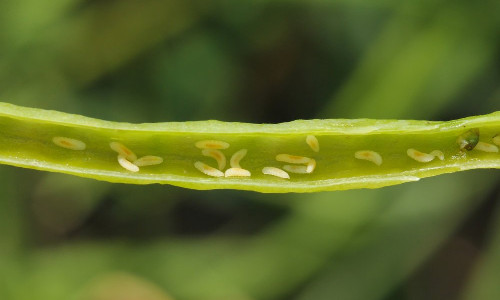Understanding the life cycle of any pest is helpful in both avoiding them and controlling them. Because no-see-ums are so hard to see, it can be difficult to pinpoint where they live and just how long they can torment you. As you work to control these pests, here’s a closer look at just how long they live.
Typical Life Cycle of a No-See-Um
Defining the life cycle of the no-see-um isn’t easy, because 4,000 to 5,000 different species of the insect exist. However, all species go through the same basic life cycle that includes all four stages of metamorphosis. For most species, the eggs hatch two to seven days after the female lays them. Defining the life cycle of the no-see-um isn’t easy, because 4,000 to 5,000 different species of the insect exist. The first stage, the larval stage, is where the greatest variety lies. This can last just a couple of weeks all the way to a year or even longer. The environmental conditions where the larvae hatch must be conducive to the pupal stage before they will enter it. If it’s too cold or too dry, the fly will slow down its larval development. Also, the species of fly will impact how long the larval stage lasts.
Once the larvae enter the pupal stage, they will remain in the pupa for two to three days. This gives them enough time to transform into the adult fly. Once they emerge from the pupa, the adult no-see-um will live for between two to seven weeks, according to Purdue University. During their adult stage, the insects feed on flower nectar until it is time to breed. Female no-see-ums use blood from mammals and birds to produce eggs, starting the life cycle over again. The average female will breed up to seven times, with 30 to 100 eggs each time, before dying.
Do No-See-Ums Live Through Winter?
If you live in an area that gets cold in the winter, you may be wondering if the life cycle of these little critters will allow them to live through the cold. Because adult no-see-ums live just two to seven weeks, most will die before winter weather hits. The answer to this question lies in the no-see-ums ability to slow down their life cycle.
No-see-ums breed continually throughout their life. In the winter, they continue this process, but the eggs or larvae will slow down and allow the insects to get through the cold weather. As soon as conditions are favorable, the eggs will hatch or the larvae will pupate, and the cycle starts again. The adults will not survive the winter weather, but they will leave behind plenty of larva or eggs before dying off.
Because they breed continually for two to seven weeks and lay thousands of eggs during this time, no-see-ums remain a pest that is difficult to combat. Understanding more about their life cycle and lifespan will help you take appropriate measures to protect yourself from their irritating bites.

